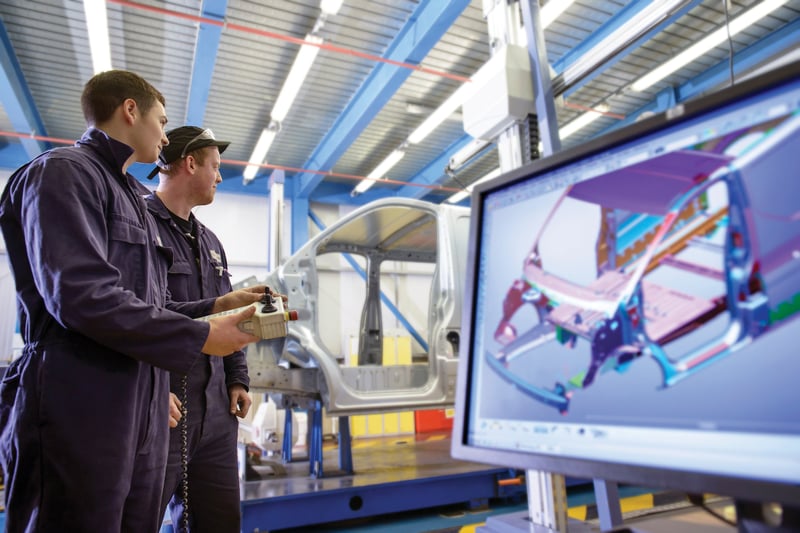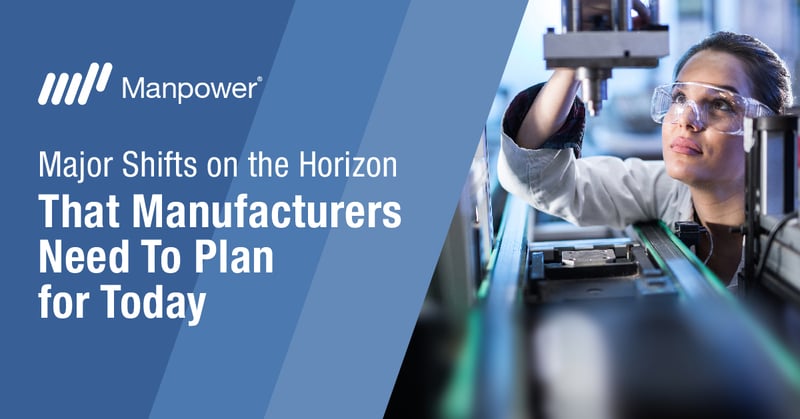As the leader of Manpower Manufacturing, the number one question I am asked is how organizations can prepare for their tomorrow. This is important as we face a new horizon of roles and skills that are tied to a faster adoption of digital technologies such as automation and AR/VR, and also to new cyber security risks. And the arrival of this new horizon has accelerated greatly as a result of COVID-19.
Manpower has done a tremendous amount of research on roles and skills of the future. Looking at all the roles and skills can be overwhelming, so I thought it would be helpful to share our perspective on the Top 10 Job Design Changes in the Digital Era. If you are not in Manufacturing, these job design changes are just as important as the shift cuts across most if not all roles as well as sectors.
Here’s a quick run-down of how to think about these changes:
- Quantitative – With data and structured information, most roles are more quantitative and evidence- based and require working with that data.
- Tech-Assisted - From automation to virtual reality, tech is the name of the game with human/tech collaboration skills and roles needing to be part of workforce planning for almost all roles.
- Optimization-Focused – No longer is effective enough; optimization is expected from most job assignments and activities; it is the “new” continuous improvement.
- Integrative and Cross-Functional – Innovation and resilience requires diversity of ideas and skills. Teams and multiple stakeholders make work more integrative and involve cross-functional work and processes for most roles. Team design and the tools and processes that support that are the key to driving the best outcomes.
- Mobile/Virtual/Remote – Being ready for dynamic situations – whether disasters or opportunities – takes a workforce that can establish and leverage mobile/virtual and remote operations and the tech that supports them. As well, mobile, virtual and remote work practices expand options for safe, balanced and cost-effective work activities for many roles of all types. We are all living this on the fly in today’s environment and, as our What Workers Want research shows, this is not temporary.
- Predictive – Anticipating opportunities and possibilities as well as vulnerabilities or hotspots is a crucial focus going forward and digital technologies enable seeing ‘next’ more than ever before.
- Sustainable Solution-Focused – Expanded and continuing sustainability expectations from many stakeholders change the lens of solutions internally and externally with or without some of the accompanying formal legislation; each role can contribute to sustainability in its many dimensions and achieve ecological, brand and community capital goals.
- Commercially Oriented – Every role needs to have a connection to the folks who keep you in business – your customers. In a more digital era, the touchpoints you have with customers are more important than ever. How do you keep the customer at the heart of what you do?
- Mission and Stakeholder Focused – Want to increase engagement? Stay focused on the mission and the stakeholders who will help you execute…both internal and external.
- Partner-Network Dependent – We are in a joined-up world more and more. Manufacturing is no different, with a vast supply network and partners who are crucial to the execution of your vision. Managing these relationships effectively with awareness and connection to partners and supply chains, helps you manage vulnerability and stay resilient.
So, what now? What’s crucial is being planful about the shift. Remember: Most -- if not all -- jobs will have not just one or two of these re-designs, but many of them with even the possibility of being impacted by all of them. Leaders and organizations can plan for this in the following ways:
Understand the speed of your shift and the critical roles enabling them over time – this will help you prioritize your development actions.
Build the design changes into the jobs and outline a) how you will assess your talent for their development needs in each area; b) how you will build a development plan for each job that is aligned to the overall development strategy of the organization; and c) a business case connecting updated roles and skills to today’s dynamic business landscape.
Remember that talent is a renewable resource – being planful about the shift allows you to bring your existing talent with you on the journey. Your upskilling programs to build the skills that align with these job design changes is your tactical passport to success.






Comments